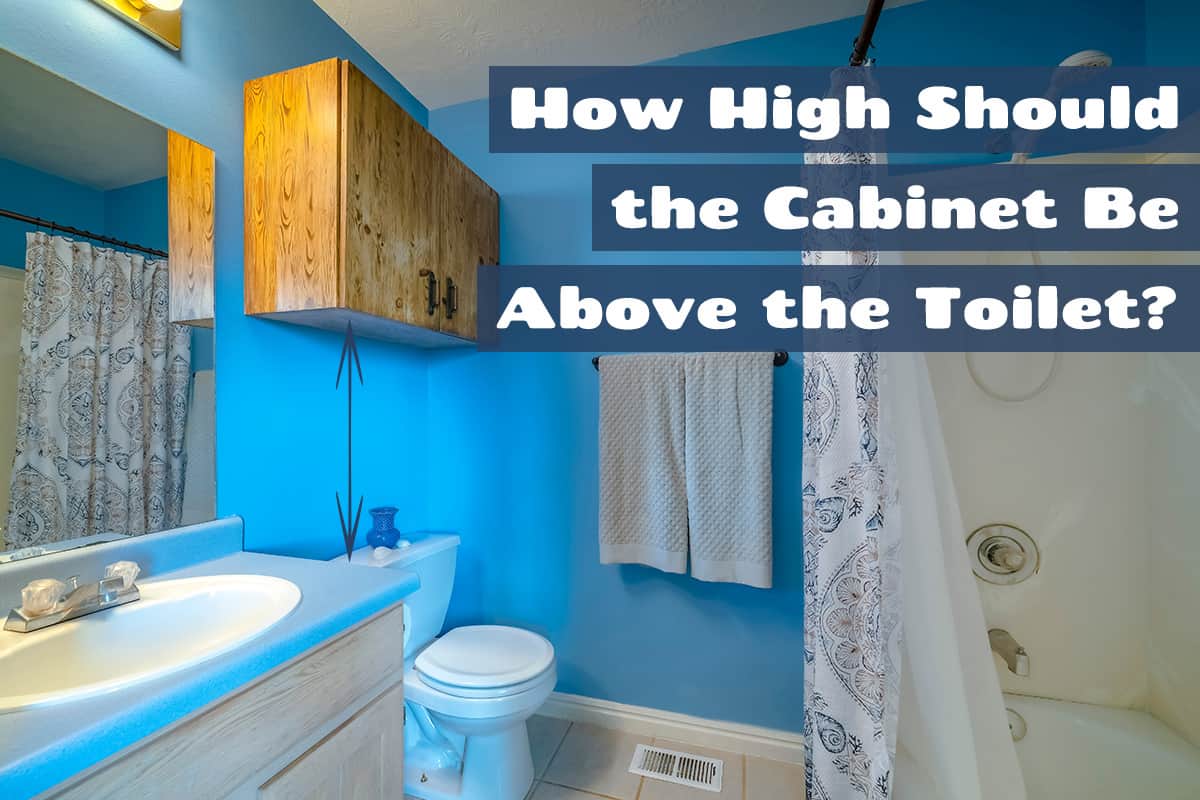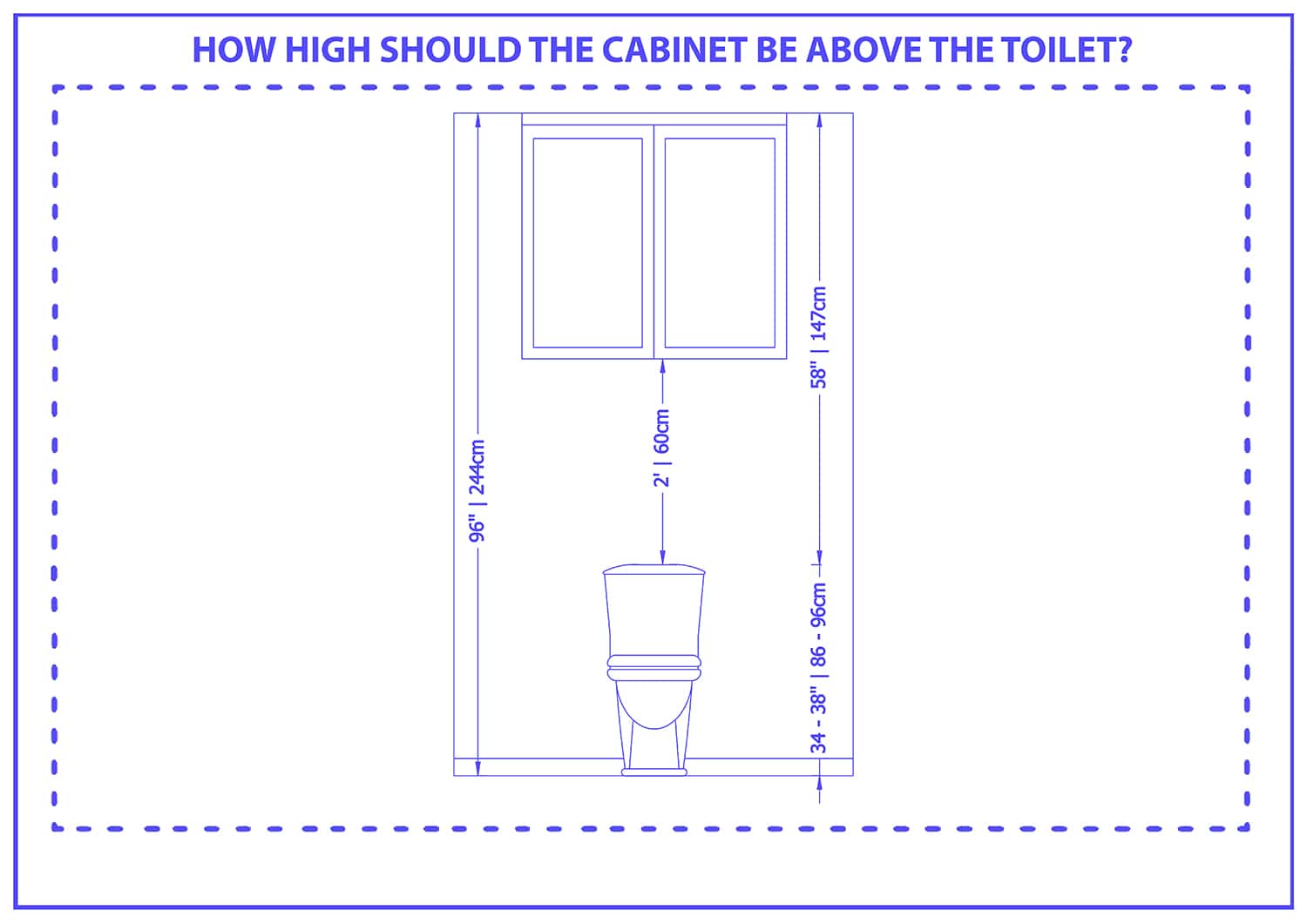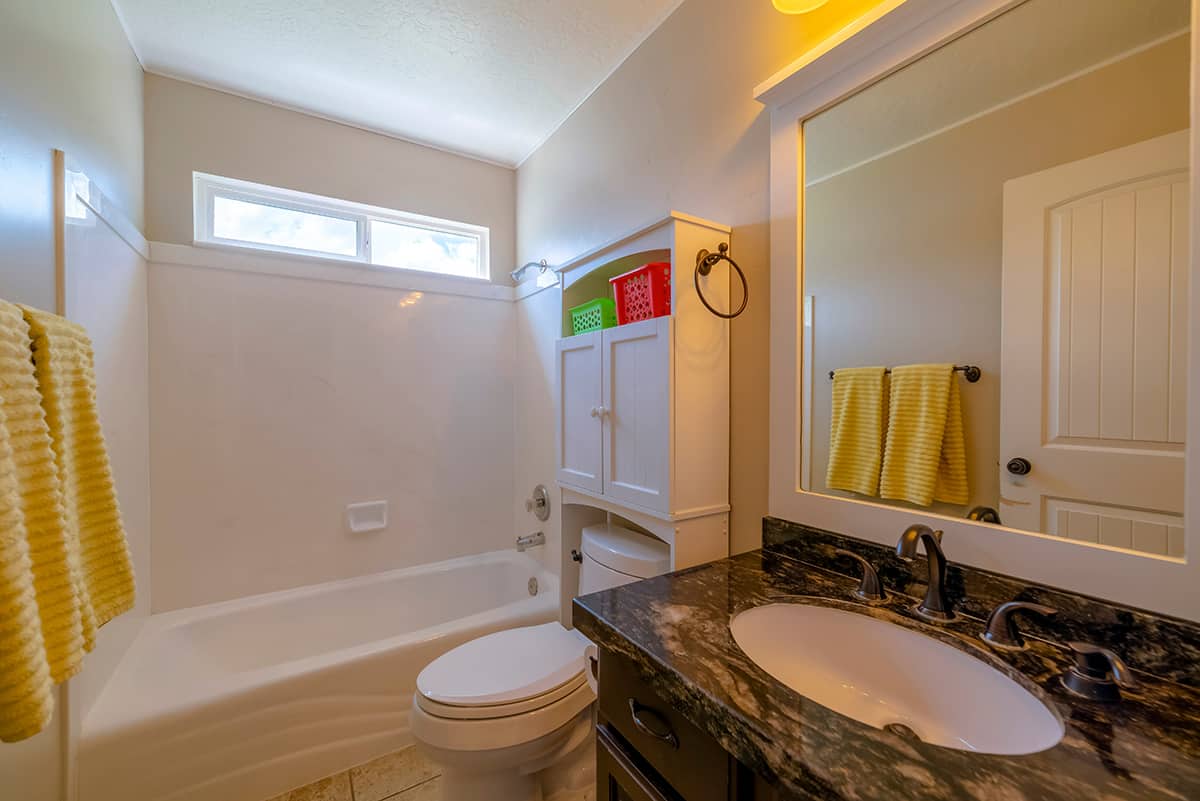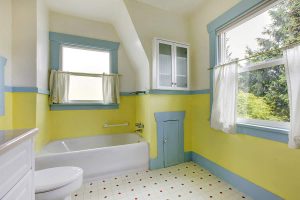Proper bathroom storage is essential to ensure your bathroom looks clean and uncluttered at all times. By installing a range of storage options in your bathroom or washroom, you create places for towels, toilet paper, shampoos, lotions, and toothbrushes to be stored.
Most bathrooms are among the smallest rooms in the home, so although you need to create storage, you might find there is limited wall space to actually install cabinets or shelving. A handy place for installing a cabinet in the bathroom is directly over the top of the toilet, and this can work really well as long as you take a variety of factors into account.
This guide explores looks at the ideal height for cabinets above a toilet and the considerations you’ll want to think about before installing a cabinet over the toilet.
Here is a quick takeaway.
- Ideal Distance: Ensure there is a space of at least 2 feet between the top of the toilet and the bottom of the cabinet for comfortable use without risk of injury.
- Cabinet Depth: For cabinets with a depth of less than 6 inches, height is flexible. For depths between 6 and 12 inches, maintain the 2 feet distance. Avoid using cabinets deeper than 12 inches in this space.
- Cabinet Height and Bathroom Size: Consider the height of the toilet and the size of the bathroom. The cabinet should be accessible and should not obstruct bathroom functionality.
- Consider User Height: Adjust the cabinet height based on the average height of the users to ensure comfort and accessibility.
Distance Between Toilet and Wall Cabinet
The ideal distance between a toilet and the cabinet above is 2 feet. This space ensures there is an allowance where a user can sit on the toilet without hitting their head on the bottom of the cabinet unit. This measurement is based on standard toilets that have a water tank behind the seat, with a typical height from the floor of around 36 inches.
This means that the distance from the floor to the bottom of the cabinet will be around 60 inches or 5 feet. A cabinet set to this height will be easy for most adults to access, providing useful storage without getting in the way of other aspects of the bathroom. In a child’s bathroom, storage will need to be installed elsewhere in order for them to safely reach it.
Can Cabinets Go Over the Toilet?
Cabinets can be installed over a toilet if you want to provide your bathroom with more storage space. Before you install a cabinet over the toilet, there are several things to take into account.
Since people will need to be able to sit on the toilet comfortably without injuring themselves, the cabinet needs to be high enough to allow for suitable headspace yet low enough that the items in the cabinet can be easily reached.
Cabinet depth
The depth of the cabinet you want to fix onto the wall above the toilet is one of the main things to consider. If the cabinet is shallow, then it isn’t going to get in the way of anyone using the toilet because it will be held close to the wall. If the cabinet has a depth measurement of less than 6 inches, it can be installed directly over the toilet at any height you wish.
If the cabinet has a depth of more than 6 inches, then it is going to extend out into the bathroom further and could, therefore, pose a problem for people using the toilet. When the cabinet depth ranges between 6 inches and 12 inches, it should be installed around 2 feet from the top of the toilet.
This will ensure you can sit on the toilet without hitting your head on the bottom of the cabinet. If the cabinet has a depth of greater than 12 inches, you may want to consider installing it in a different location altogether, as this could impede too much on the space over the toilet.
Cabinet height
The overall height of the cabinet will affect if it can fit into the space above the toilet. Most toilets with a tank behind the seat will come to between 34 and 38 inches from the floor, and the standard ceiling height in most homes is 96 inches. This means that you will have roughly 58 inches of wall space between the top of the toilet and the ceiling of the bathroom where the cabinet could be installed.
In most cases, the cabinet should be fixed at a height of 2 feet from the top of the toilet, which means the cabinet will need to have an overall height of less than 34 inches to fit comfortably. If the cabinet is taller than this, you may struggle to fit it in the space and ensure full functionality.
Type of toilet
There are a range of different toilet types available for homes, and these come in a number of sizes. To ensure your cabinet fits appropriately into the space over your toilet, you’ll want to factor the type and size of your toilet into the equation. Standard toilets that feature tanks behind the seat come to around 36 inches in height from the floor, and the cabinet should be installed 2 feet above this.
If your toilet doesn’t have a visible tank at the back, then you can instead measure from the height of the toilet seat. Most toilet seats are around inches from the floor, so to find where to install the cabinet, measure around 3 feet from your toilet seat to the bottom of the cabinet. This will allow enough space to sit down on the toilet while ensuring the items stored in the cabinet are easy to reach.
User height
The height of people using your toilet can impact the height at which you should install a cabinet. If you are taller than average, or if you have tall people living in your home, then you may want to install the cabinet slightly higher than recommended.
This will ensure the person using the toilet isn’t going to bang their head on the cabinet when they sit down, and it will also mean the cabinet is at a suitable height for tall people to access.
Bathroom size
The size of your bathroom can impact where your cabinet should be installed. You need to allow space for the cabinet door to be opened fully while a person is standing in front of it, so you’ll need to consider this before installing the cabinet. Take into account other doors that open in the room or nearby windows that could impact the space available.








